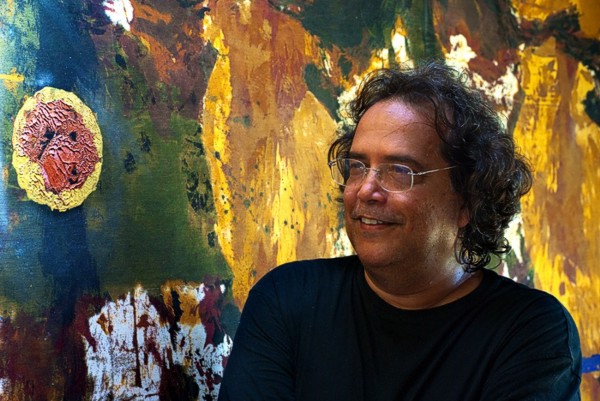Plínio Palhano
Biography
"Light is as vital to Palhano's pictures as the photosynthesis to plants' growth, this is why it leaves behind him every academic conception of mere scenery's illumination. This invisible light preexists in his canvases, it's inlaid in its own center, like a closed oil-lamp".
Francisco Brennand is a sculptor, painter and ceramist.
Plínio Palhano was born in Recife, state of Pernambuco, Brazil, in 1954. He belongs to the group named Seventy's generation, from Pernambuco. He's a figurative painter, but a figurative one that "attracts" and "abstracts" the figure, mending it by the "inflamed" form through which he develops his work.
His works are included in several collections. Among them, there are the ones who belong to State's Museum of Pernambuco and those who belong to Aloísio Magalhães Modern Art Museum, as well as the ones who belong to selected contemporary art's collection of Mario Soares Foundation (Portugal).
At the beginning of his career, he attended the Art course at Federal University of Pernambuco, which was, then, directed by Queralt Prat and Lenira Regueira. At that time, he became familiar with other names of his artistic generation, such as Antonio Carlos Montenegro, Flávio Gadelha, Gil Vicente and Carlos Aprigio. In that phase, he consolidated his vocation, feeling free for not attaching himself to "formulas" concerning to material use.
After a brief passage through law school (where he entered by his father's influence - Humberto Soares was the name of his father, who was Professor and Magistrate -), he abandoned university to fully dedicate to arts.
He then begins to frequent the atelier of José Cláudio, a famous painter, a well-known representative of Pernambuco and Brazilian picture. It will be a fecund and fraternal friendship, resulting in a conjunct work - a series of pictures turning about the naked body, based on models.
His interest concerning the naked body continues still in the end of the seventies and this results in a series of more than one hundred pictures. At that time, he divides the space of the atelier with Piedade Moura, with whom he realizes sessions with models and also shares the interest for landscapes, always-natural ones, mainly those suggested by the sugar cane plantations in Pernambuco (Zona da Mata) and Olinda's forests.
It will be also in Olinda, in the old Saint Peter's square, that he and some companions, such as Alex Montelberto, Beth Gouveia, Eudes Mota, Fernando Guerra, Frederico Fonseca and Ricardo Aprígio establishes a collective atelier, named 190 Space. The same group participated in the consolidation of Pernambuco Professional Artists' Association.
More than the vision of a late "expressionist" - centered in emotional universe of pictorial language, Plínio Palhano gives to its pictures a kind of investigation on what can be seen, similarly to Merleau-Ponty, that searched a "perception phenomenology", doubting on every domesticated eye.




